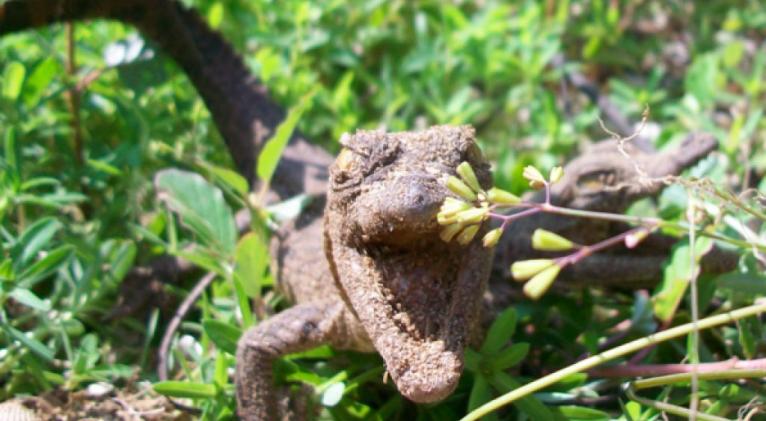Exciting New Prospects for Crocodile Conservation in Cuba
especiales

Since 1999, the Wildlife Conservation Society (WCS), where I serve as a program fellow and herpetologist, has worked in Cuba to protect both American and Cuban crocodiles. With air boats unavailable in the isolated island nation, our research frequently has us walking for hours through dark muddy swamps of coastal mangroves, opening paths using machetes, and navigating internal lakes and rivers with small canoes looking for juvenile and adult crocodiles.
President Obama’s decision to normalize U.S. diplomatic relations with Cuba has focused attention on a possible end to the two nations’ long political estrangement. Yet despite the enduring diplomatic impasse, for years many of us in the U.S. conservation community have worked hand in hand with our counterparts in Cuba (with the permission of both governments) to preserve that nation’s globally important biodiversity.
A restoration of diplomatic relations now holds out the promise of building upon this important conservation foundation. As the largest archipelago in the Caribbean, Cuba has by far the most area protected for wildlife, the most diverse habitats, and the highest number of endemic wildlife species in the region. Best conserved are the montane forest in the East and the coastal wetlands, offshore keys, and coral reefs along the country’s coasts.
The coastal wetlands are where Cuba’s two crocodile species – the American (Crocodylus acutus) and Cuban (Crocodylus rhombifer) – are found. Each year during June and July, hundreds hatch in nesting beaches along the Wildlife Refuge Monte Cabaniguán (WRMC) in southeastern Cuba. Both crocodile species interbreed in the wild and are of conservation concern. While American crocodiles are distributed widely, Cuban crocodiles occur only on the southwest coast of Cuba in the Zapata Swamp and the Lanier Swamp on the Island of Youth.
As noted above, conducting research on these animals can be demanding. When crocs are spotted everyone on our team jumps into the water, using hand-capture techniques and fishing nets to catch and release each animal. After dinner at the field station each evening, we gather our night equipment and go back to the waters of the WRMC to count crocodiles using spotlights. Hundreds of shiny crocodile eyes can be spotted in a single night.
The goal of achieving meaningful and long-lasting conservation strategies for crocodiles and the wetlands they inhabit has fueled a bilateral effort that grows stronger each year. The leadership of our Cuban colleagues on the ground and in academic institutions such as Universidad de la Habana has been essential. Our partnership has resulted in critical conservation work generated and led by Cubans.
These include doctoral student Yoamel Milian Garcia’s research on hybridization between Cuban and American crocodile species; crocodile experts Toby Ramos and Manuel Alonso Tabet’s important efforts driving the creation of Cuba’s first “red list” of endangered vertebrates; and Yairen Alonso Jiménez’s extensive fieldwork on the ecology and reproductive behavior of American crocodiles in the wetlands of southeastern Cuba.
The research suggests that current levels of crocodile hybridization in the wild are as high as 49 percent. American crocodiles from Cuba appear to be different from crocodile species native to Latin America and may represent a different evolutionary lineage. This finding will drive the development of unique new conservation approaches in Cuba.
The collaboration of WCS in Cuban conservation efforts began with the work of my mentor, the renowned crocodile expert John Thorbjarnarson. Since John’s sudden and tragic passing in 2010, I’ve had the opportunity and privilege to continue the work that he began, with the long-lasting support and continued mentorship of crocodile expert Dr. George Amato, Director of the Sackler Institute for Comparative Genomics at the American Museum of Natural History; American crocodile expert Dr. Manuel Alonso Tabet; and Professor Dr. Georgina Espinosa Lopez from Universidad de la Habana.
Normalization of relations between the U.S. and Cuba by President Obama and Cuban leader Raúl Castro could mean that conservationists will have more opportunities to collaborate, forge new international partnerships, and provide new or additional employment opportunities for the highly educated Cuban conservation workforce, whose local expertise and knowledge will enable scientists working in Cuba to better serve the goal of biodiversity conservation.
Of course, with the opening of diplomatic relations there is also the potential that the pace of economic growth may have negative impacts on Cuba’s coastal ecosystems through rapid development and the growth of tourism.
Those challenges must be tackled with thorough environmental impact assessments, thoughtful sustainable development, and appropriate conservation planning to help protect Cuba’s astounding natural assets. Cuba has an opportunity to benefit from lessons learned and best practices identified in other developing countries in the region.
No one can know for certain what the future will bring, but the long-term collaboration between international and Cuban scientists provides a blueprint for new efforts to secure the protection and management of the most pristine mangrove ecosystems in the entire Caribbean region and the magnificent crocodile species they sustain.













Add new comment